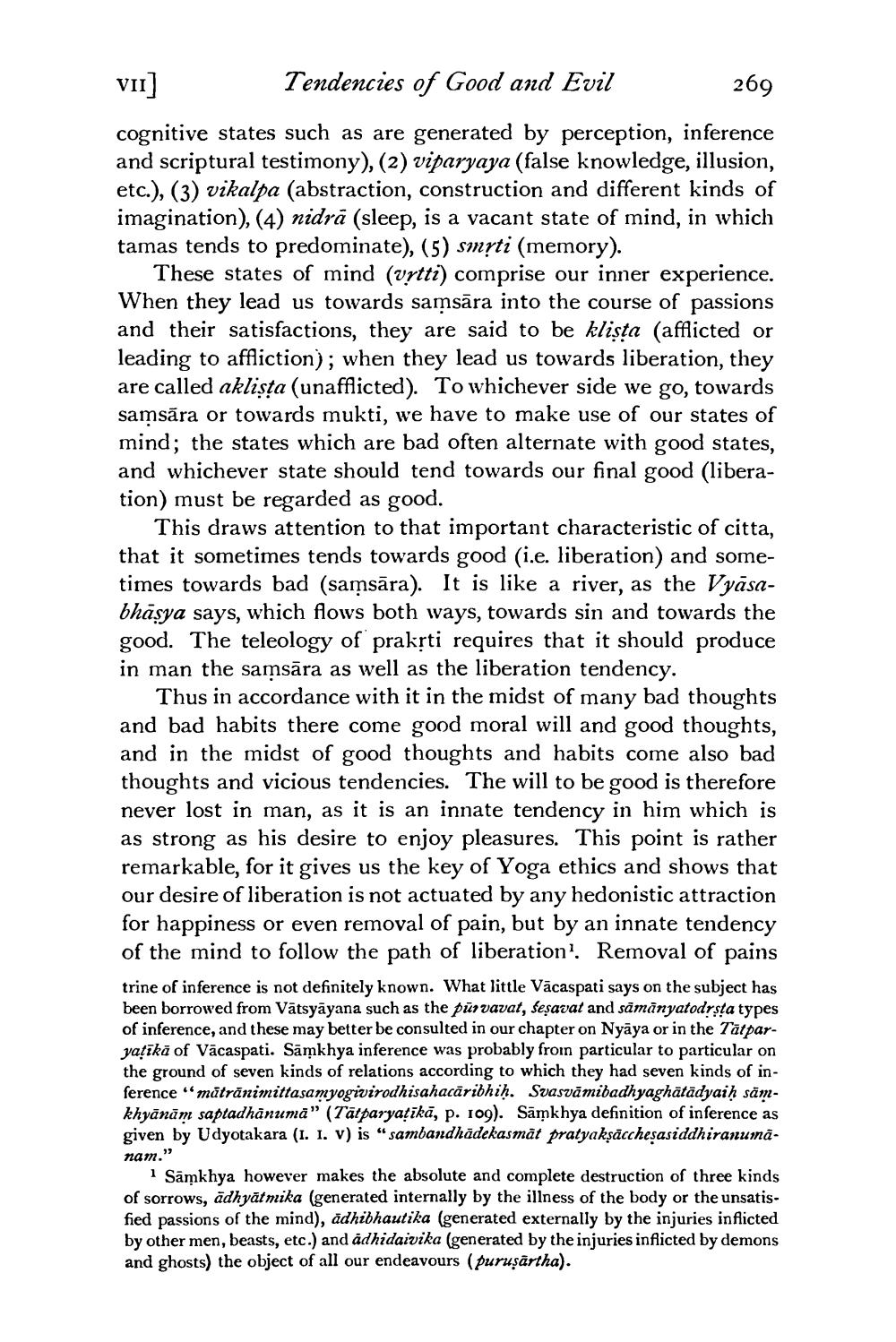________________
VII]
Tendencies of Good and Evil
269
cognitive states such as are generated by perception, inference and scriptural testimony), (2) viparyaya (false knowledge, illusion, etc.), (3) vikalpa (abstraction, construction and different kinds of imagination), (4) nidrā (sleep, is a vacant state of mind, in which tamas tends to predominate), (5) smrti (memory).
These states of mind (vrtti) comprise our inner experience. When they lead us towards samsāra into the course of passions and their satisfactions, they are said to be klista (afflicted or leading to affliction); when they lead us towards liberation, they are called aklista (unafflicted). To whichever side we go, towards samsāra or towards mukti, we have to make use of our states of mind; the states which are bad often alternate with good states, and whichever state should tend towards our final good (liberation) must be regarded as good.
This draws attention to that important characteristic of citta, that it sometimes tends towards good (i.e. liberation) and sometimes towards bad (samsāra). It is like a river, as the Vyāsabhāsya says, which flows both ways, towards sin and towards the good. The teleology of prakrti requires that it should produce in man the samsāra as well as the liberation tendency.
Thus in accordance with it in the midst of many bad thoughts and bad habits there come good moral will and good thoughts, and in the midst of good thoughts and habits come also bad thoughts and vicious tendencies. The will to be good is therefore never lost in man, as it is an innate tendency in him which is as strong as his desire to enjoy pleasures. This point is rather remarkable, for it gives us the key of Yoga ethics and shows that our desire of liberation is not actuated by any hedonistic attraction for happiness or even removal of pain, but by an innate tendency of the mind to follow the path of liberation'. Removal of pains trine of inference is not definitely known. What little Vācaspati says on the subject has been borrowed from Vātsyāyana such as the pūrvavat, seşavat and sämānyatodrsta types of inference, and these may better be consulted in our chapter on Nyāya or in the Tatparyaţikā of Vācaspati. Samkhya inference was probably froin particular to particular on the ground of seven kinds of relations according to which they had seven kinds of inference "matrănimittasamyogivirodhisahacaribhiḥ. Svasvāmibadhyaghātādyaih sämkhyānām saptadhanuma" (Tātparyaţikā, p. 109). Sāmkhya definition of inference as given by Udyotakara (1. 1. v) is "sambandhädekasmāt pratyaksācchesasiddhiranumanam.”.
Samkhya however makes the absolute and complete destruction of three kinds of sorrows, ādhyāt mika (generated internally by the illness of the body or the unsatisfied passions of the mind), adhibhautika (generated externally by the injuries inflicted by other men, beasts, etc.) and adhidaivika (generated by the injuries inflicted by demons and ghosts) the object of all our endeavours (puruşartha).




